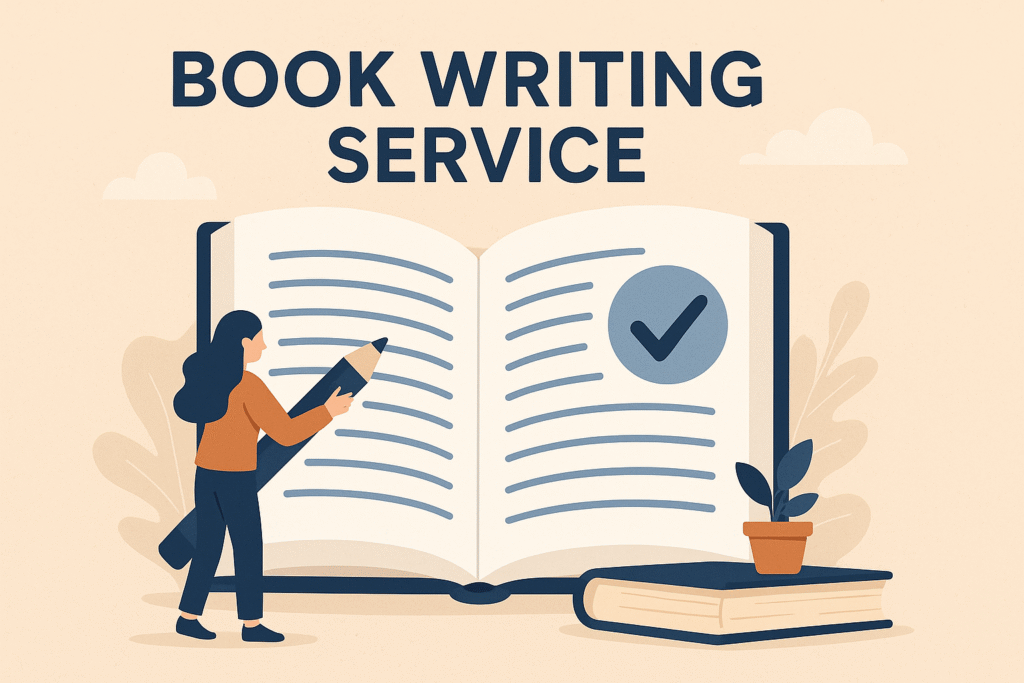Introduction
Do you remember the long nights spent hunched over a keyboard, struggling to organize your thoughts into a book? Today, that process has been transformed. With modern tools and creative approaches, you can write a book without typing a single word. This doesn’t mean you have to hire someone to do all the work for you, nor does it mean your story loses its authenticity. Thanks to new technologies and alternative methods, sharing your ideas, experiences, or expertise has never been easier. Whether you’re an aspiring novelist or a professional looking to share industry insights, there are plenty of ways to create a book without typing. Let’s explore these innovative approaches.
Hire a Ghostwriter
One of the most effective ways to write a book without typing is by working with a ghostwriter.
What is Ghostwriting?
Ghostwriting means having someone else put your ideas into words while you remain the credited author. The ghostwriter works behind the scenes, shaping your vision into a polished manuscript.
This practice isn’t limited to non-writers. Busy executives, celebrities, and even seasoned authors often rely on ghostwriters to meet deadlines or refine their work. It’s about collaboration and efficiency, not a lack of talent.
How It Works
- Interviews and Discussions: You share your story, knowledge, and ideas with the ghostwriter through calls, meetings, or recorded conversations.
- Drafting and Refining: The ghostwriter creates a draft based on your input.
- Editing Together: Both of you work to polish the text until it reflects your voice and message.
Benefits of Ghostwriting
- Saves you time.
- Lets you focus on your career or personal life.
- Helps you bring professional storytelling and structure to your book.
Repurpose Existing Content
You may already have most of your book written without realizing it. Blogs, podcasts, videos, or social media posts can all serve as the foundation for a manuscript.
The Process
- Review your content library and identify recurring themes.
- Organize related pieces into chapters.
- Add commentary or new insights to refresh the material.
Why It Works
Repurposing ensures your book builds on content your audience already finds valuable, while giving it a more polished, book-ready form. Many authors have successfully turned online posts or training material into published books.
Use Dictation and Transcription Tools
If speaking feels more natural than typing, dictation technology is your best friend. Modern apps now convert your speech into text with surprising accuracy.
Popular Tools
- Dragon Naturally Speaking – Known for high accuracy.
- Google Voice Typing – Built right into Google Docs.
- Otter.ai – Offers real-time transcription and cloud syncing.
- Rev Voice Recorder – Combines recording with transcription services.
- Microsoft Dictate – Integrates with Office 365.
- Apple Voice Control – Built into iOS and macOS.
Why Try Dictation?
Dictation lets you “talk your book” while jogging, commuting, or relaxing. You’ll still need to revise, but it’s an excellent way to capture raw ideas quickly and naturally.
Use Interviews and Case Studies
Sometimes, the best way to build a book is by letting others speak for you. Interviews and case studies bring depth and diversity to your narrative.
- Interviews: Share conversations with experts, clients, or peers.
- Case Studies: Highlight real-life examples that show the impact of an idea or strategy.
These add credibility, showcase multiple perspectives, and make your book more engaging for readers.
Collaborative Writing
Co-authoring is another way to write a book without shouldering all the work. Collaborating with others spreads out the workload, combines expertise, and helps expand your potential audience.
Tips for Success
- Choose co-authors who align with your vision.
- Divide chapters or themes clearly.
- Keep a consistent voice by setting style guidelines or using an editor.
- Communicate openly to avoid conflicts.
Collaboration, when managed well, results in a stronger book than what one person might achieve alone.
Leverage Social Media Storytelling
In today’s digital age, books don’t have to start as manuscripts. Social media platforms can be used to build stories in real time.
- Share story snippets via Instagram Stories, TikTok, or Facebook Live.
- Gather feedback and let your audience guide certain aspects of the narrative.
- Later, compile these pieces into a structured manuscript.
This interactive approach makes readers feel like part of your journey while helping you refine your content.
Turn Workshops Into Books
If you’ve ever hosted a workshop, seminar, or masterclass, you already have book material at your fingertips.
Why It Works
- Workshops often include practical advice, Q&A sessions, and real-world examples.
- They capture fresh insights that can be expanded into chapters.
The Process
- Record or transcribe the workshop.
- Organize the information into logical sections.
- Add context, case studies, and refinements.
This method is particularly effective for professionals or educators who already produce live content.
Conclusion
Writing a book no longer requires endless hours of typing. From ghostwriters and dictation software to repurposed content and social media storytelling, modern methods make the process faster, easier, and more collaborative.
The best part? There isn’t a single right way to do it. Whether you prefer speaking, sharing, or collaborating, the tools are available to bring your story to life in a way that feels natural to you.
So if you’ve been holding back because typing feels overwhelming, it’s time to rethink the process. Your book doesn’t have to start with a keyboard it can start with your voice, your past work, or even your conversations.
FAQs
How can I write without typing?
You can use voice-to-text tools, hire a ghostwriter, or repurpose existing content.
Do I need to write my book myself?
Not necessarily. Ghostwriters and collaborative writing can help turn your ideas into a complete book.
Can I use speech to create a book?
Yes. Dictation apps allow you to speak your book and have it transcribed into text.
What’s the easiest type of book to write?
It depends on your strengths. For some, nonfiction based on expertise is simpler. For others, fiction feels more natural.




